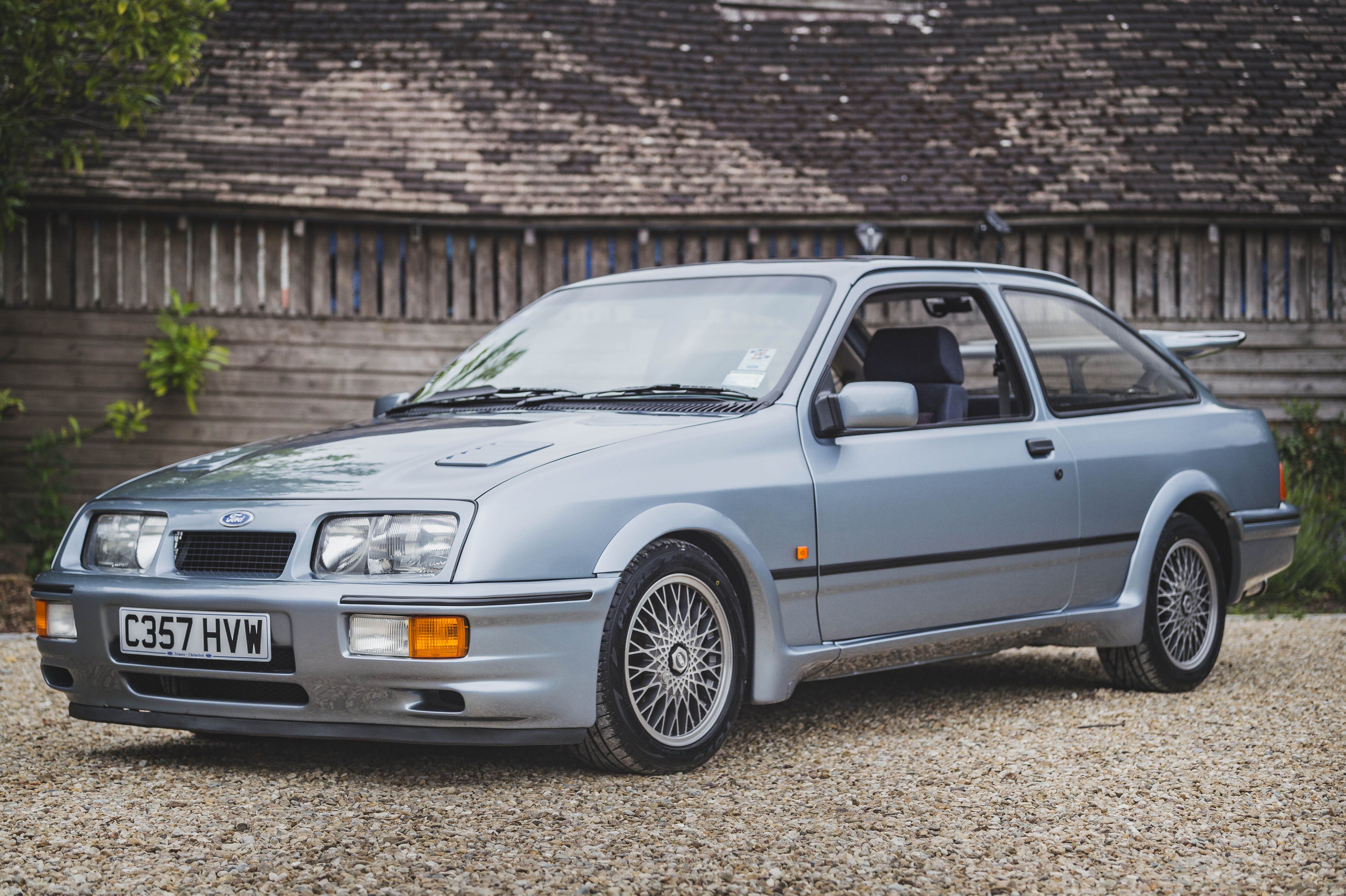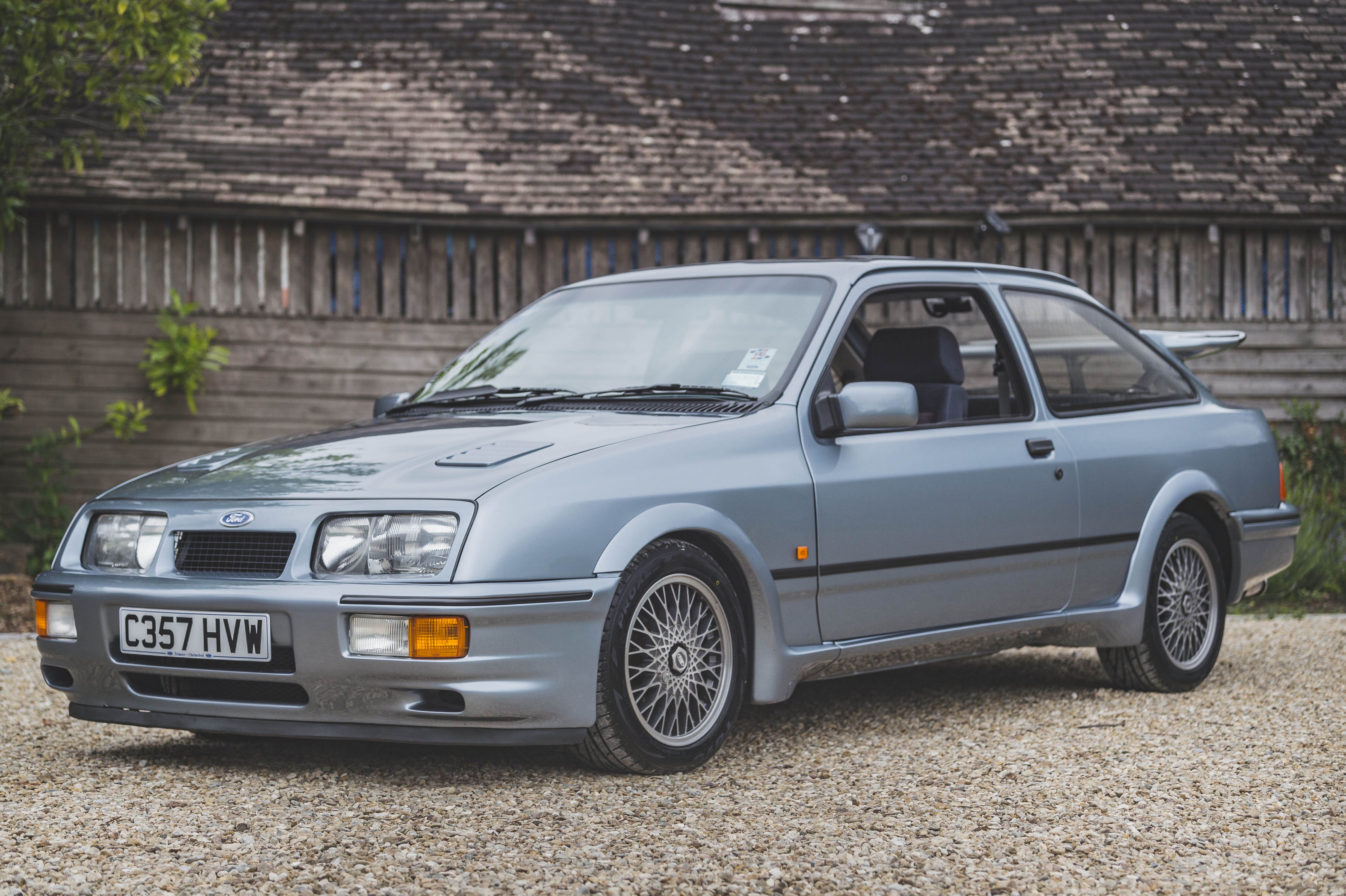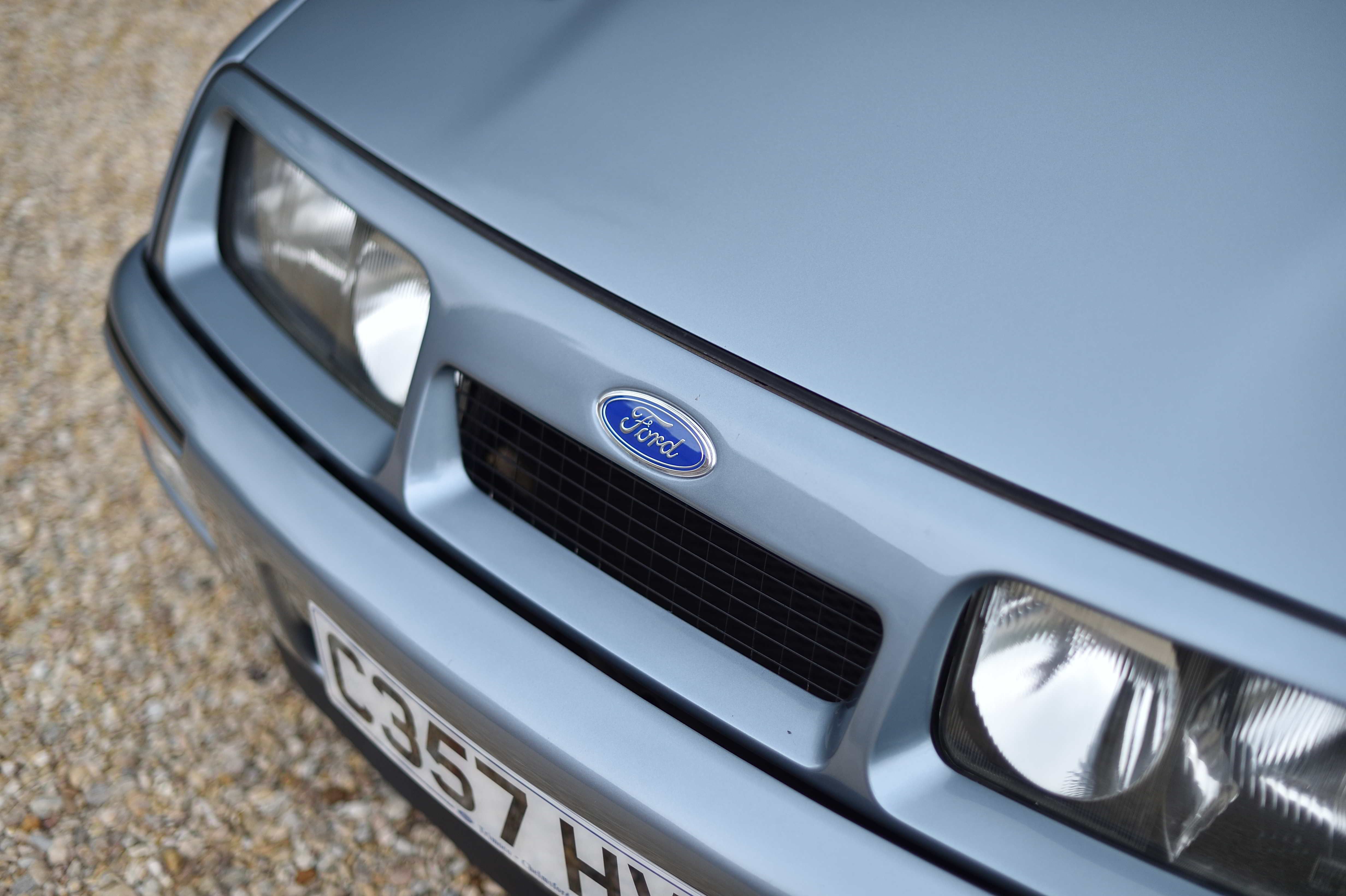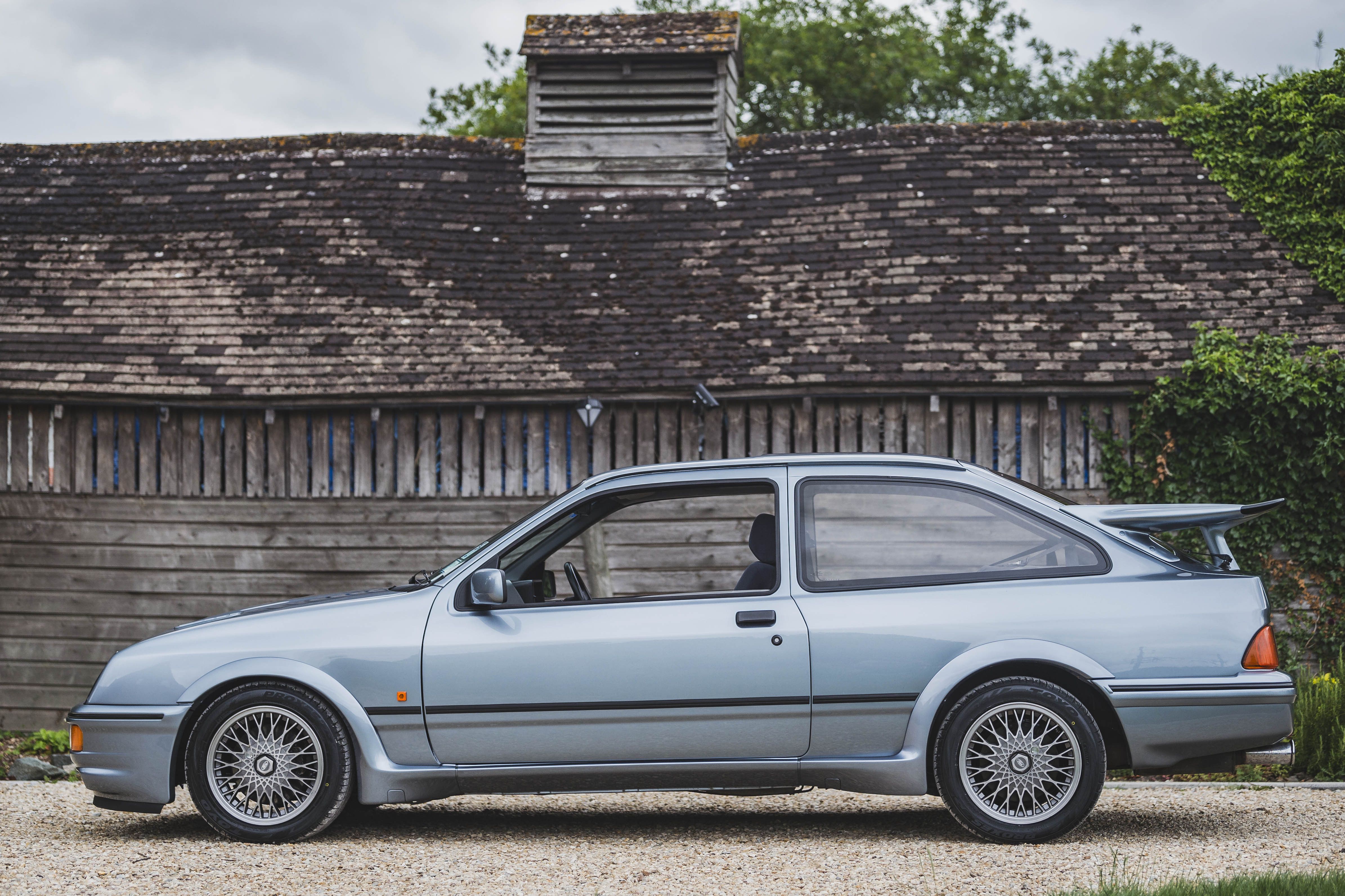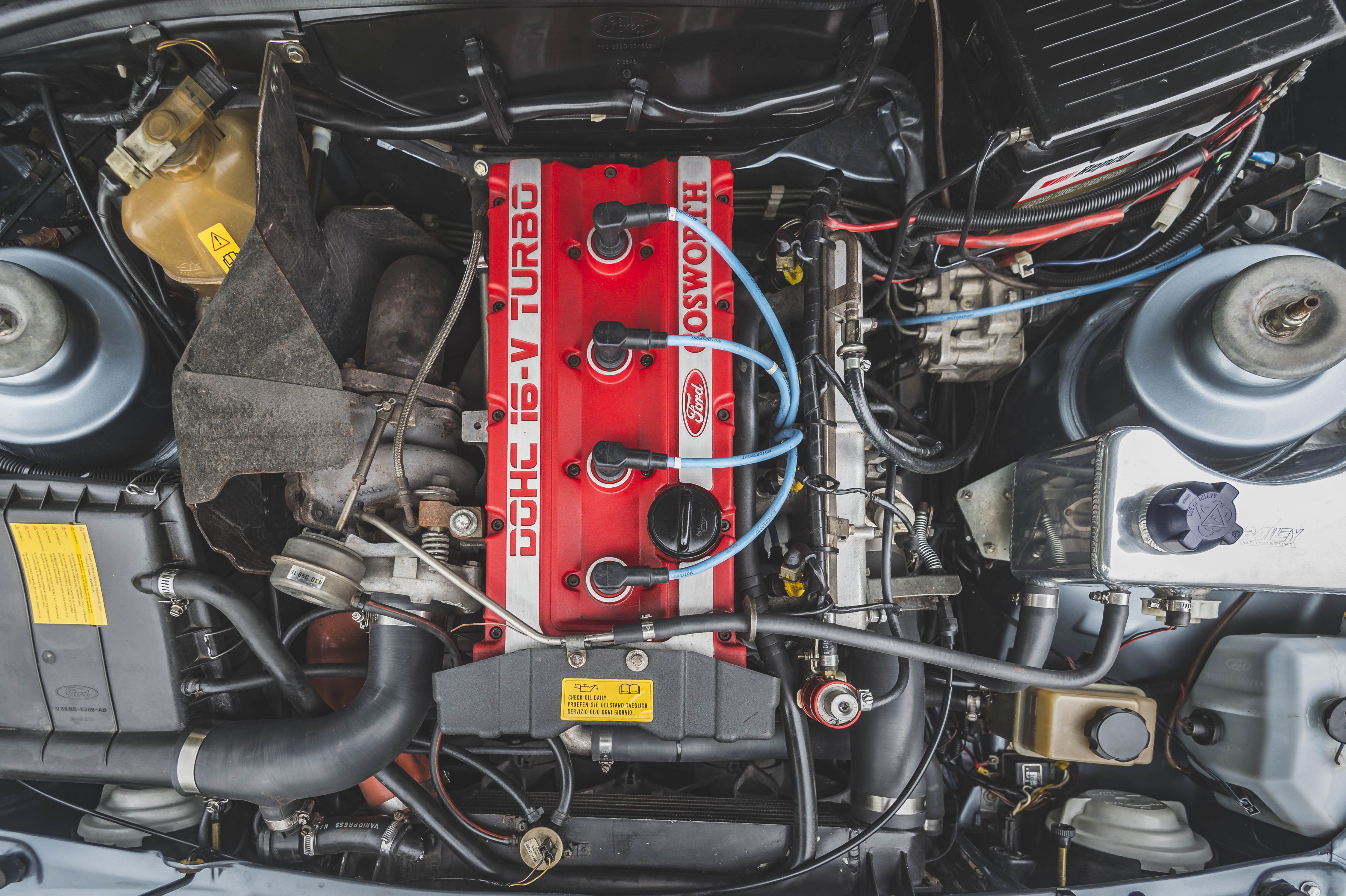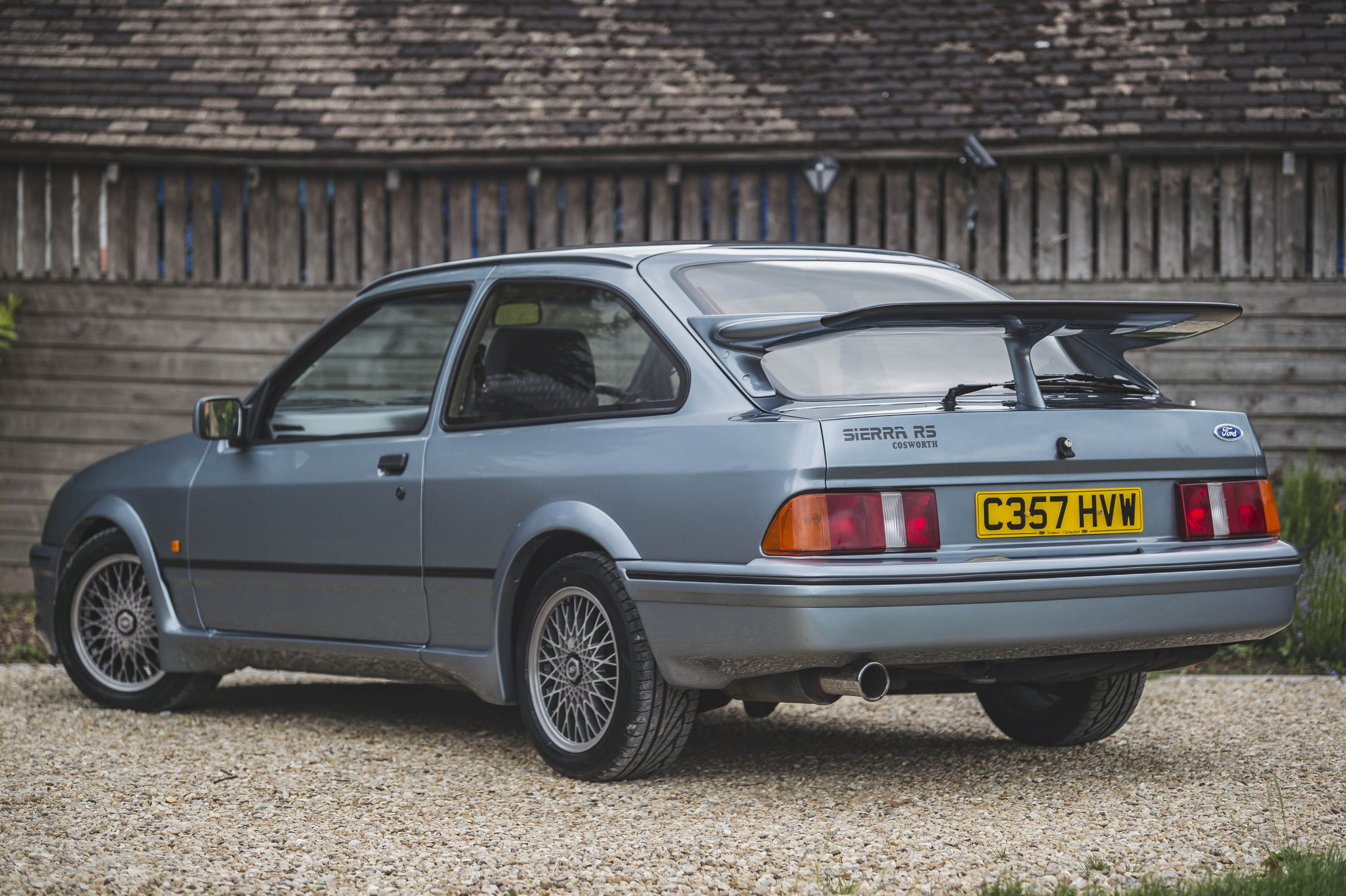The Ford Sierra RS Cosworth has been rising in popularity over these last few years to the point that some ultra-clean examples have traded hands for over $120,000 and this may become one of the most expensive examples ever sold.
That's because this blue Cossie is the last remaining road-legal survivor of a batch of 10 pre-production cars made by Ford to test and tune what would become one of the most legendary cars ever to be adorned by the FoMoCo badge. Those 204 horses may not seem like much today but we'll assure you the towering rear wing is bound to turn more heads today than many modern sports cars.
The Sierra RS Cosworth was Ford's Group A monster
The European division of Ford and, more notably, Ford of Britain, prized itself with a rich history of success in touring car racing dating back to the '60s Colin Chapman engineered a more spirited version of the dull Cortina that went on to win the British Saloon Car Championship in 1964 in the hands of Jim Clark. The original Lotus Cortina was followed, soon enough, by a quicker version of the Mark 1 Escort that was, at first, powered by a Lotus-designed Twin Cam engine. In its most aggressive guise, the Twin Cam was sourced straight from open-wheel racing with Alan Mann fitting an FVC 16-valve engine producing over 200 horsepower to its title-winning red-and-golden Escort piloted by Frank Gardner.
When even the Twin Cam was outgunned, Ford knocked at Cosworth's door for additional support.
Little over a decade later, following multiple wins in both the World Rally Championship and touring car racing, Ford again wanted to go racing and asked Cosworth for help in the engine department.
This time, however, Ford wanted to race in Group A, a new production-based touring car class that was launched in 1982 to replace the old Group 2 regulations that the later Mark 1 Escorts were built to compete under. The Group A rules banned flared arches as seen on Group 5 cars meaning that all cars now looked a lot more like their street-bound counterparts but Ford knew you still needed a properly fast car to compete given that Jag had come out with the XJS while BMW had the 635 CSi and, by 1987, had debuted the mind-numbingly fast E30 M3.
Cumbersome and outdated almost from the word go, the Mustang didn't do well and was even outgunned by the similarly graceless Camaro. Ford needed a smaller coupe to turn into a race car and, following a few meetings of Ford Europe's top brass, it was decided that the Sierra is apt for the job.
Originally introduced in 1982 as a four-door sedan, the Sierra marked a revolution in mainstream automotive design as it moved away from the boxy styling that had been adopted by all of the major American automakers since the '70s. The Sierra, by contrast, was curvy and sleek, cutting through the air as it saved fuel down the highway. By the '90s, the propensity of angular cars had reduced drastically to the point that you could barely find one pointy edge on a family sedan or station wagon towards the end of the 20th century.
But the curvy design isn't what set the Sierra RS Cosworth apart from a stylistic standpoint.
Privateers had already noticed the potential of the Sierra, the German scene being flooded by Sierras, albeit in dual side window XR4i guise, by 1985. The RS Cosworth, however, would prove to be the performance benchmark once it emerged on the scene in 1987.
It all started under the hood, of course. Cosworth had to work with an existing engine that Ford sold in its cars at the time, namely the SOHC T88 Pinto. A bespoke aluminum head with two belt-driven cams operating 16 valves was devised and, to get even more power out of it, a Garrett T3 turbocharger was added into the mix for good measure. As a result, power went up to 201 horsepower at 6,000 rpm and 205 pound-feet of torque at 4,500 rpm in the road cars. The first race cars were a lot more powerful, obviously, rated conservatively at about 375 horsepower.
All of the ponies were sent to the back axle through a five-speed Borg-Warner gearbox. There, they encountered a viscous-coupling limited-slip differential which meant the car handled great by the standard of the mid-'80s. It was also really quick with a 0-62 mph time of 6.2 seconds en route to a top speed of 150 mph - officially.
1985 Ford Sierra RS Cosworth specifications
|
Engine |
SOHC T88 Pinto + Garrett T3 turbocharger |
|---|---|
|
Horsepower |
201 HP @ 6,000 RPM |
|
Torque |
205 LB-FT@ 4,500 RPM |
|
0-62 mph |
6.2 seconds |
|
Top Speed |
150 mph |
The car you see here is one of the first 10 made as part of Ford's 4P 'Pre-Production Prove Out Programme'. Seven of those 10 were turned into Group A rally cars while the two other road cars were apparently driven to the ground through grueling incessant testing. This one, however, wasn't and, in all of its Moonstone Blue, it apparently starred in the original 'Cars of the Future' TV ad before being exported to New Zealand in about 1994.
While Ford had to build 5,000 Sierra RS Cosworths to homologate the Group A racing car, this example was built roughly nine months before the full production run started. It features the ludicrous rear wing - said to produce 20.4 kilograms of downforce at 70 mph - but not the lower ducktail spoiler glued to the trunk lid. The ducktail is a specific detail added to the RS500 version of which, as the name suggests, only 500 units were made in the summer of 1987 as Ford wanted to humiliate the opposition further.
To put it into perspective, the car became so dominant that the top class of the ETCC was basically all Sierras by 1988-89 as nothing could stay in the way of these 485 horsepower beasts - not even the M3 even though BMW homologated not one but two Evolution versions in an attempt to drag along with its N/A contender whose engine grew from 2.5-liters to over three liters in a span of just five short years.
In fact, the Sierra RS Cosworth was so good that its reign was curtailed only by the arrival, in 1990, of the Nissan Skyline GT-R R32 that had AWD and all matter of electronics on its side. In hindsight, both are iconic and that's precisely why C357 HVW deserves to be preserved and you may well be the one to do it... if you can fork out at least $76,000 (although it may end up costing more, the auction over at Themarket.co.uk is ongoing).

